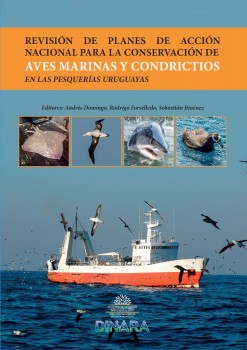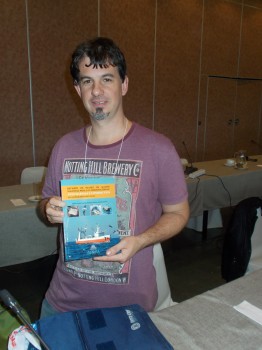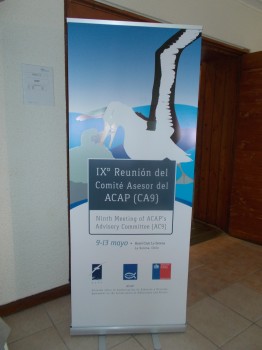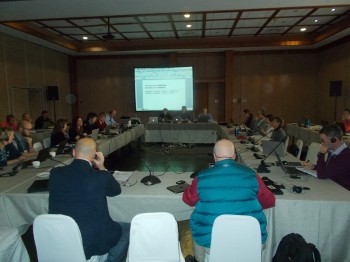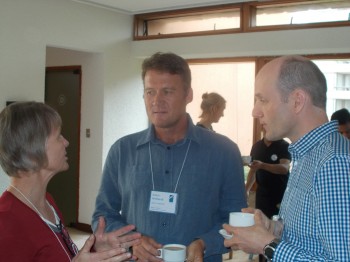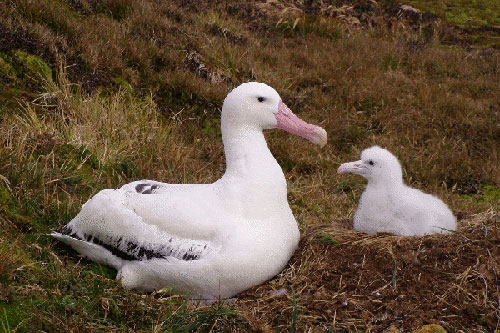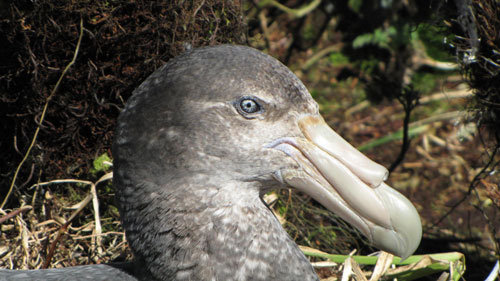A National Plan of Action Seabirds-Trawling for the Falkland Islands (Islas Malvinas)* was produced in 2004, with an update produced five years later. A second revision was produced in December 2014 but is, as yet, not available online.
The latest version of the plan’s overview text written by Marine Quintin and Joost Pompert follows:
“The 2014 Falkland Islands National Plan of Action Seabirds-Trawling (FI-NPOA-S-T-2014) outlines a four year strategy that strives to further reduce seabird mortalities due to interactions with trawlers, specifically by understanding and trialling discard management for the future and long-term implementation on vessels. Following FAO guidelines, a Seabird Interaction Management Strategy is described making recommendations based on five interconnected components: 1. Observer coverage, 2. mitigation measures, 3. by-catch objectives, 4. research and 5.development and education. Each sector of the trawl fleet is considered separately when recommendations diverge. The Seabird By-catch Committee (SBC), composed of representatives from the FIFD and other sectors of government (Environmental Planning Department or EPD), the fishing industry (through their umbrella organisation FIFCA), the JNCC ACAP coordinator and one NGO (Falklands Conservation or FC) is recommended to work more actively. The duty of the SBC is to conduct regular evaluations of the progress of this plan and act as an advisory body for and report to the Fisheries Committee and the Environmental Committee.
In adopting and implementing the FI-NPOA-S-T-2014, the Falkland Islands will ensure compliance with domestic and international policies and conventions and build on its international reputation for responsible and sustainable management of its fishery.”
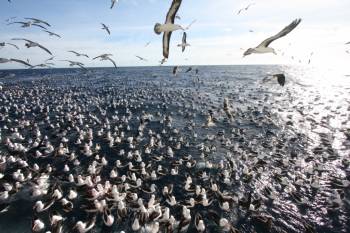
Black-browed Albatrosses gather behind a trawler in the South Atlantic, photograph by Graham Parker
With thanks to Joost Pompert for information.
References:
Quintin, M. & Pompert, J. 2014. Falkland Islands National Plan of Action for Reducing Incidental Catch of Seabirds in Trawl Fisheries, 2014 (FI-NPOA-S-T-2014). Stanley: Fisheries Department, Directorate of Natural Resources. 28 pp. [not available on-line, contact the ACAP Information Officer for a PDF].
Sancho, E. 2009. Falkland Islands National Plan of Action for Reducing Incidental Catch of Seabirds in Trawl Fisheries. [Stanley]: Falklands Conservation. 40 pp.
Sullivan, B. 2004. Falkland Islands Plan of Action for Reducing Incidental Catch of Seabirds in Trawl Fisheries. Stanley: Falklands Conservation. 43 pp.
John Cooper, ACAP Information Officer, 04 May 2016
*A dispute exists between the Governments of Argentina and the United Kingdom of Great Britain and Northern Ireland concerning sovereignty over the Falkland Islands (Islas Malvinas), South Georgia and the South Sandwich Islands (Islas Georgias del Sur y Islas Sandwich del Sur) and the surrounding maritime areas.

 English
English  Français
Français  Español
Español 